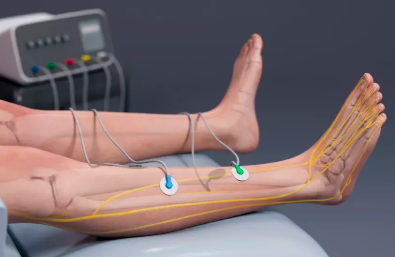Pain relief has come a long way from traditional methods. While medications and physical therapy remain vital, modern technology is now revolutionizing pain management. Devices like TENS units, laser therapy machines, radiofrequency ablation, and wearable tech are offering effective, non-invasive solutions for people suffering from acute or chronic pain.
This article dives deep into these cutting-edge pain relief technologies, explaining how they work, who they benefit, and how you can incorporate them into your healing journey.
Understanding Technological Pain Management
🔹 What Is Technological Pain Relief?
Modern pain relief technologies use electricity, light, sound waves, or electromagnetic fields to reduce inflammation, block pain signals, or promote tissue healing—without drugs or surgery.
🔹 Benefits of Technology-Based Pain Relief
- Non-invasive or minimally invasive
- Fewer side effects than medication
- Can be used at home or in clinical settings
- Ideal for chronic or drug-resistant pain
- Can enhance physical therapy outcomes
Transcutaneous Electrical Nerve Stimulation (TENS)
🔹 What Is TENS?
TENS (Transcutaneous Electrical Nerve Stimulation) is a therapy that uses low-voltage electrical currents to stimulate nerves through electrodes placed on the skin.
🔹 How It Works
- Blocks pain signals from reaching the brain
- Encourages the body to release endorphins (natural painkillers)
🔹 Conditions Treated with TENS
- Chronic back and neck pain
- Arthritis
- Sciatica
- Labor pain
- Post-operative pain
🔹 Pros and Cons
| Pros | Cons |
|---|---|
| Portable and affordable | Not suitable for deep tissue pain |
| Non-invasive and drug-free | Not effective for everyone |
| Minimal side effects | Requires proper electrode placement |
Laser Therapy (Low-Level Laser Therapy – LLLT)
🔹 What Is Laser Therapy?
Laser therapy uses low-level light to penetrate tissues and stimulate cell regeneration and circulation, reducing inflammation and pain.
🔹 Mechanism of Action
- Enhances ATP production in cells (energy supply)
- Improves tissue repair and reduces oxidative stress
- Anti-inflammatory and analgesic effects
🔹 Best Uses
- Tendonitis and bursitis
- Joint inflammation
- Sports injuries
- Nerve pain and neuropathy
- Chronic wounds
🔹 Safety and Efficiency
- FDA-approved for many conditions
- Painless and non-invasive
- Sessions usually last 10–20 minutes
- May require multiple treatments for best results
Radiofrequency Ablation (RFA)
🔹 What Is RFA?
RFA is a minimally invasive procedure that uses radiofrequency energy to heat and destroy specific nerves responsible for pain.
🔹 Applications
- Spinal arthritis
- Knee osteoarthritis
- Chronic back pain
- Neck pain
🔹 Procedure Overview
- Performed with local anesthesia
- Needle inserted under imaging guidance
- Nerve tissue is heated to block pain signals
🔹 Results and Risks
- Relief lasts 6 to 12 months, sometimes longer
- Mild soreness post-procedure
- Not suitable for all types of nerve pain
Shockwave Therapy
🔹 How It Works
Shockwave therapy uses high-energy acoustic waves to stimulate healing in soft tissue and bone.
🔹 Best For:
- Plantar fasciitis
- Tennis elbow
- Calcific shoulder tendinitis
- Achilles tendinopathy
🔹 Benefits
- Speeds up natural healing
- Reduces dependency on medication
- Enhances circulation and mobility
Wearable Pain Management Devices
🔹 Types of Wearable Devices
- Smart TENS units
- Infrared therapy belts
- EMS (Electrical Muscle Stimulation) bands
- Posture-correcting devices with vibration alerts
🔹 How They Help
These devices can be worn throughout the day to provide continuous pain control, muscle support, and reminders for posture correction, which indirectly reduces pain.
Other Innovative Pain Relief Technologies
🔹 Virtual Reality Therapy (VR)
Used in hospitals and rehabilitation centers to distract patients and alter their pain perception.
🔹 Biofeedback Machines
Helps patients gain control over involuntary body processes like heart rate and muscle tension, aiding in pain relief.
🔹 PEMF Therapy (Pulsed Electromagnetic Field)
Improves cellular function and stimulates tissue regeneration, effective in bone healing and arthritis.
Combining Technology with Traditional Methods
Modern technology should complement—not replace—traditional therapies such as:
- Physical therapy
- Massage
- Acupuncture
- Medication (when necessary)
An integrative approach ensures comprehensive pain management, targeting the issue from multiple angles.
8 Frequently Asked Questions (FAQs)
1. Is TENS safe for daily use?
Yes, TENS is generally safe for daily use when applied correctly and under supervision if you’re new to the device.
2. Does laser therapy have side effects?
Low-level laser therapy is safe and painless, with minimal risk of side effects when performed by trained professionals.
3. Who should avoid TENS or EMS devices?
People with pacemakers, epilepsy, or pregnant women should consult their doctor before using electrical stimulation devices.
4. Is RFA painful?
The procedure is done under local anesthesia and causes only mild discomfort. Post-procedural soreness may occur.
5. How many sessions of laser therapy are needed?
It depends on the condition. Typically, 6 to 12 sessions are recommended for noticeable improvement.
6. Can wearable devices replace medications?
They may reduce the need for medications but are usually part of a broader treatment plan.
7. Are these technologies covered by insurance?
Some procedures like RFA may be covered. TENS units and laser therapy may require partial or full out-of-pocket payment.
8. Can I use multiple technologies together?
Yes, with medical supervision, combining TENS, physical therapy, and laser treatments can enhance pain relief.
Conclusion
The world of pain management has been transformed by technological innovation. From TENS and laser therapy to radiofrequency ablation and wearable devices, patients now have access to safer, smarter, and more effective pain relief methods. While not every solution works for everyone, a personalized, well-monitored treatment plan can lead to significant pain reduction and faster recovery.
If you’re dealing with persistent pain, consult your doctor about integrating modern pain relief technology into your care plan. Relief may be closer—and more advanced—than you think.









